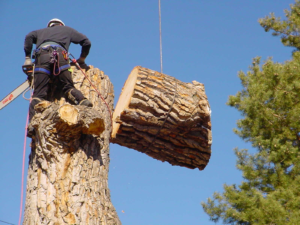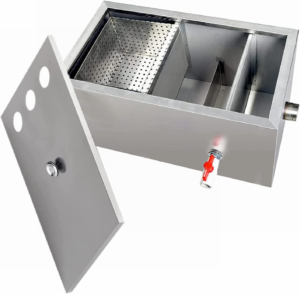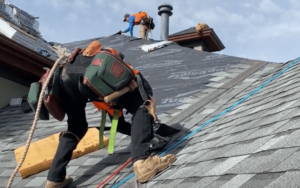Pests can cause serious problems for humans. They damage property, spoil food, and attack crops. They also spread diseases like Plague, Hantavirus Pulmonary Syndrome, Lymphocytic Choriomeningitis, and Salmonella.
Regularly check window and door screens for holes and tears that pests can use to enter your home. Keep garbage in sealed containers and clear away discarded materials that attract pests. Contact Pest Control North Vancouver BC now!

Pests can introduce diseases, germs, and other problems threatening human safety and well-being. The most effective way to protect buildings and their occupants from such unwanted guests is to prevent them from getting into the building in the first place. Preventive techniques can be used to do so, ranging from thorough cleaning and sanitary practices to structural modification and pest control methods.
The most obvious way to prevent pests is by removing their food, water and shelter sources. This can be accomplished by sweeping up crumbs and wiping down counters on a regular basis. Sanitizing rugs, carpets and bed linens on a weekly or monthly basis also helps. Clutter should be removed from inside and outside the house, and trash cans should be tightly closed, allowing only enough space for a lid. Garbage should be disposed of regularly, and leaking pipes should be repaired. Wood piles should be kept away from the house and shrubbery cut back. Such efforts can eliminate a host of potential pest entry points, including gaps around the foundation and loose siding.
In addition, pests should be identified by their life cycle stages. Knowing what kind of pests are present in a building, and when, allows for targeted interventions that reduce the need for harsh chemical products. This is especially important for businesses that rely on a supply chain to deliver crates of food to the facility, which may be infested with cockroaches or other pests.
Pest infestations can quickly become a health and safety concern, contaminating food with bacteria or other pathogens or physically damaging the building or its services. In addition, the annoyance and nuisance of some pests is considerable. It is therefore advisable to take preventive steps, even in the presence of a professional pest control service. In fact, many pest infestations can be prevented entirely with non-chemical measures. This is known as Integrated Pest Management, or IPM. IPM combines pest identification and monitoring with sanitation efforts, environmental modifications and other non-chemical approaches to managing a pest problem. The goal of IPM is to prevent the need for pesticide chemicals by limiting the amount of time that pests are in the building, and only using chemical treatments when necessary.
Suppression
Pest control techniques aim to kill or deter pests without harming non-target organisms, the environment and people. They fall into three categories: prevention, suppression and eradication. Prevention techniques, such as crop rotation and soil fumigation, work to prevent a pest from becoming established. They are usually the most costly, but also provide long-term benefits. Suppression strategies are intended to reduce pest numbers and damage below damaging levels, and can include chemical applications of a wide range of materials. Examples include pheromones and repellents, nematodes and pathogens, and genetically modified organisms.
Scouting is the practice of regularly searching for, identifying and assessing pests, their numbers and the damage they are causing. This helps determine whether a pest can be tolerated or needs to be controlled. Regular monitoring is a key element of any integrated pest management (IPM) program. This information can help guide decisions about when, where, and how to use suppression tactics.
Physical controls include traps, barriers and screens that either kill or block the pest from entering an area. These can be particularly useful for pests such as rodents and birds that are primarily found in or around structures. Changing the environment also sometimes works to suppress or eradicate pests. Heat, radiation and other environmental factors can all make an area unsuitable for a pest population to thrive in.
Biological control involves conserving and releasing natural enemies of pests to reduce their populations. These can be predators that feed on a specific pest, parasitoids that infest or destroy the host, or pathogens that attack or kill a specific type of pest. Examples of these agents include the mites that suppress aphids in orchards, the wasp that parasitizes the greenhouse whitefly, and the nematode that eats grubs.
Biological control agents are often very specific and may only target one or two species of pest. They are available commercially for purchase and release to supplement other suppression methods. They can be released in a manner similar to that of pesticides, using spot application or treating alternating strips within fields. Nematodes, for example, are microscopically small worms that can be sprayed by the millions to control many different kinds of pests such as fleas and grubs.
Eradication
The ultimate goal of pest control is eradication. This is achieved when there is a global reduction to zero incidence of a disease as a result of deliberate intervention efforts. Only two diseases have been declared eradicated to date: smallpox (variola virus) and rinderpest (RPV). Both of these were eliminated through targeted vaccination programs that eliminated the need for other, more intensive control methods.
Pesticides are powerful tools that can quickly and effectively eliminate many different pests, but they must be used carefully to prevent unwanted effects. They can be harmful to people, pets and the environment when they are not used properly or overused. Pesticides can also be ineffective when they are used on a continuous basis against the same pests, because the bugs will develop resistance to them over time. Rotating pesticides and using them on a limited area can help to prevent this.
Cultural pest control techniques are aimed at making the environment uninhabitable or inhospitable to the unwanted insects by creating barriers or distractions. This could include obstructive landscaping, planting crops that are detested by the pests, or even constructing diversionary elements such as scrap wood piles that draw them away from the crop areas.
Biological pest control techniques are usually employed on farmlands and involve the release of a predator or pathogen to target and kill the undesirable species. One common example of this is the release of ladybugs to attack aphid populations without harming the valuable crops.
Another biological control method involves the use of parasitic nematodes. These microscopic worms live in the soil and can be sprayed to attack a variety of pests, such as fleas, grubs, and aphids. They can be especially effective against aphids when they are mixed with a little bit of soap.
Physical traps and netting are other examples of physical pest control. They require an individual to handle the traps and catches, but can be very effective when used in conjunction with other controls.
Controlling Pests
Pests are unwanted organisms that damage property, spoil food, or cause disease in humans and livestock. They include small mammals (e.g., Black and Brown rats and mice), crawling insects (e.g., cockroaches, ants), flying insects (e.g., houseflies, blowflies, fermentation flies, moths and bees) and birds (e.g., seagulls and pigeons).
Controlling pests involves the use of prevention, suppression and eradication techniques. The goal is to protect people, plants, and property from harm caused by pests. The best way to prevent a pest problem is to stop it before it starts. Preventive measures such as pest proofing, blocking access points, and eliminating pests’ breeding grounds can stop infestations from developing or getting worse.
Using traps and bait stations to catch and kill pests can also be an effective method of controlling them. The key is to know the pests’ habits and where they are living, so you can place traps or baits in the most likely places. For example, if you know that a roach infestation is starting under the sidewalk, you can put traps and bait stations there to catch them before they reach your home.
The most effective pest control methods are usually non-chemical. These may include biological control, where parasites, predators and pathogens are used to disrupt the life cycle of a pest or kill it, cultural controls like changing irrigation practices, and physical controls such as rodent traps, bird scarers, and mechanical traps and netting.
Chemical controls are typically only used to supplement these other methods and should be applied sparingly, with the least possible impact on the environment. This is why IPM programs are so important — they help reduce the need for pesticides by using preventive measures and only spraying when necessary.
The best pest control products are often those containing low levels of chemicals and that can be applied safely. When pesticides are needed, it is essential to read and follow the label’s instructions and safety warnings. You should also take steps to protect family members and pets from exposure by removing them from the area being treated, closing windows, putting food in covered containers and covering surfaces before applying pesticides. Surface sprays should be used only in out-of-the-way areas, such as along skirting boards, and only when it is safe to do so.








